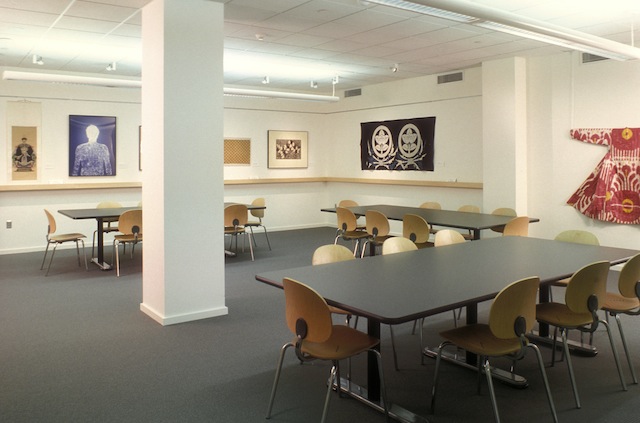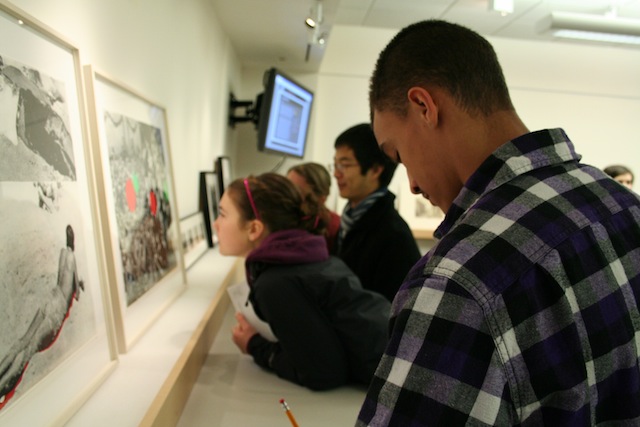By: Rachael Faust
Through the months of May and June, Katie Williams, Museum Educator at the Northwest African American Museum, and I have been inviting museum professionals in the Puget Sound region to write about notable collections access initiatives/policies at their museums. Conversing over coffee on a recent sunny day in Seattle, we talked about upcoming projects at our museums and came up with the question: “How is your museum making, or aspiring to make, collections accessible and relevant beyond exhibitions?”
The Henry Art Gallery, where I work, is located on the University of Washington campus in Seattle. As a university museum, a significant part of the Henry’s mission is to engage with university faculty and students to support their research and teaching pursuits. The museum’s collection, exhibitions, staff, and facilities are all seen as valuable resources that the Henry offers to the university community.
 Since its founding in 1927, the Henry Art Gallery has served the Pacific Northwest as a pioneer in bringing contemporary art and ideas to the region.
Since its founding in 1927, the Henry Art Gallery has served the Pacific Northwest as a pioneer in bringing contemporary art and ideas to the region.
In 2007 the Henry began an ambitious project to provide online access and increase physical access to the museum’s permanent collection. Through this project, funded in large part by the Institute of Museum and Library Services and the M.J. Murdoch Charitable Trust, Henry staff implemented new collection database software; digitized a significant portion of the works in the collection; created a searchable database accessible through the museum’s website; and launched three digital galleries designed to introduce key sub-collections and assist users in understanding, interpreting, and utilizing the Henry’s holdings.
This significant online collections access initiative was paired with an equally ambitious plan to reactivate the Henry’s Reed Collection Study Center. Since the Henry’s current Study Center opened in 1997, museum collection staff have faced the challenge of trying to accommodate visitors to the Study Center while simultaneously balancing a growing collection and a demanding exhibition schedule. This led to fluctuating, inconsistent access. The Henry’s 2007 collections access project sought to address this issue by hiring a full-time, permanent staff member to focus on managing the Study Center.
 The Eleanor Henry Reed Collection Study Center is dedicated to providing access to the Henry Art Gallery’s permanent collection, to strengthening the Henry’s bond to the University of Washington community, and to forging new relationships with Northwest scholars, educators, students, and artists who want to learn from or teach with objects in the Henry’s collection.
The Eleanor Henry Reed Collection Study Center is dedicated to providing access to the Henry Art Gallery’s permanent collection, to strengthening the Henry’s bond to the University of Washington community, and to forging new relationships with Northwest scholars, educators, students, and artists who want to learn from or teach with objects in the Henry’s collection.
This is where I come in.
In 2010 I was hired as the Assistant Curator of Collections and Academic Programs. My job consists of managing physical access to the collection in the Study Center; overseeing and progressing the Henry’s online collection initiatives; and acting as a liaison to university faculty and students.
The Henry’s 2007 collections access project is similar to hundreds of other museum projects in the nation. But what sets the Henry’s project apart, is the fact that the Henry hired a full-time permanent staff member to continue the project’s goals beyond the grant period. After the grant period ended, the Henry continued to fund the Study Center’s program expenses and my salary through the museum’s general operating budget.
After almost two years at the Henry, actively working to increase the museum’s Study Center’s visibility and attendance numbers, I’m proud to report that this academic year alone, the Study Center hosted almost 2,700 visitors! To host this quantity of visitors, I heavily relied on the tools implemented during the collections access project. The museum’s internal collections management system and the online collections database allow me to efficiently and effectively communicate with visitors about what the Henry’s collection contains and what they wanted to view.
With these achievements, I’m now turning my attention to creating a collections access policy and asking the question: how much access is too much access?
- What is the maximum number of people the museum’s Study Center can host per year with current staff size and operation hours?
- How many objects can we safely provide access to?
- What kinds of restrictions should be in place based on an object’s size, value, condition, installation instructions, etc?
- Who is the main audience? Which groups should be prioritized?
This summer I will be surveying Study Centers across the nation to answer these questions. It is my hope that I can begin to pilot new procedures during the next academic year and then work on writing a thoughtful collections access policy.
If you know of collection access policies or new research about the roles and responsibilities of Study Centers, I’m eager to hear from you.
Rachael Faust, Assistant Curator of Collections & Academic Programs, Henry Art Gallery. With a background in museum education and collections management, Rachael Faust is fascinated with how museum collections can become more accessible – both in person and online. As the Assistant Curator of Collections & Academic Programs at the Henry Art Gallery in Seattle, Ms. Faust manages the museum’s Study Center and is currently experimenting with new ways for visitors to learn from or teach with objects in the permanent collection. Ms. Faust holds an MA in Museum Studies from John F. Kennedy University in Berkeley and a BA in Art History/Criticism from the University of California, San Diego.









Add new comment